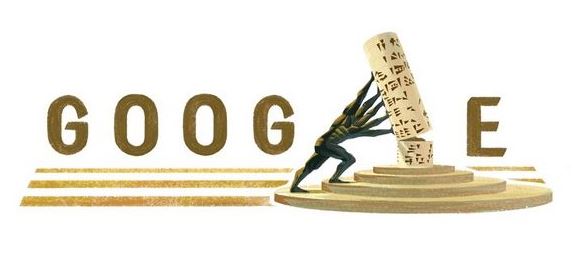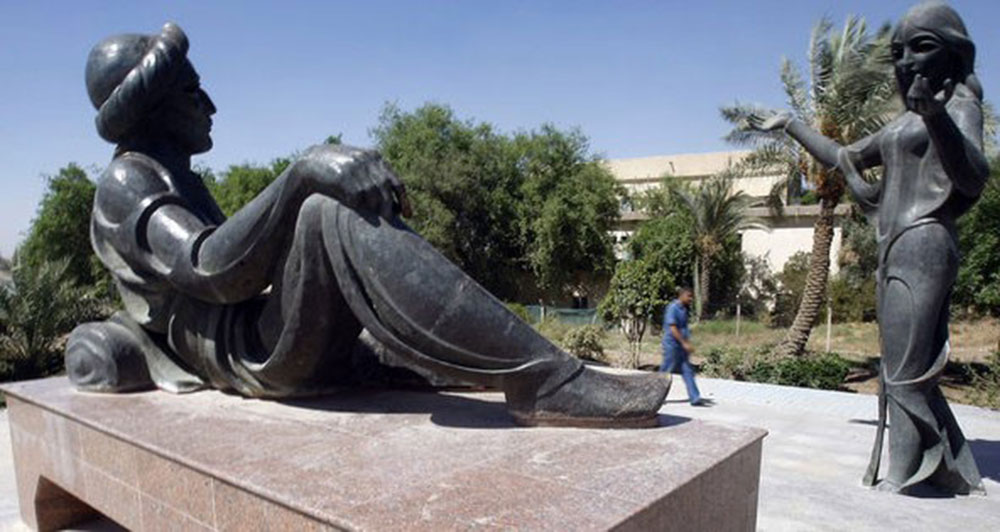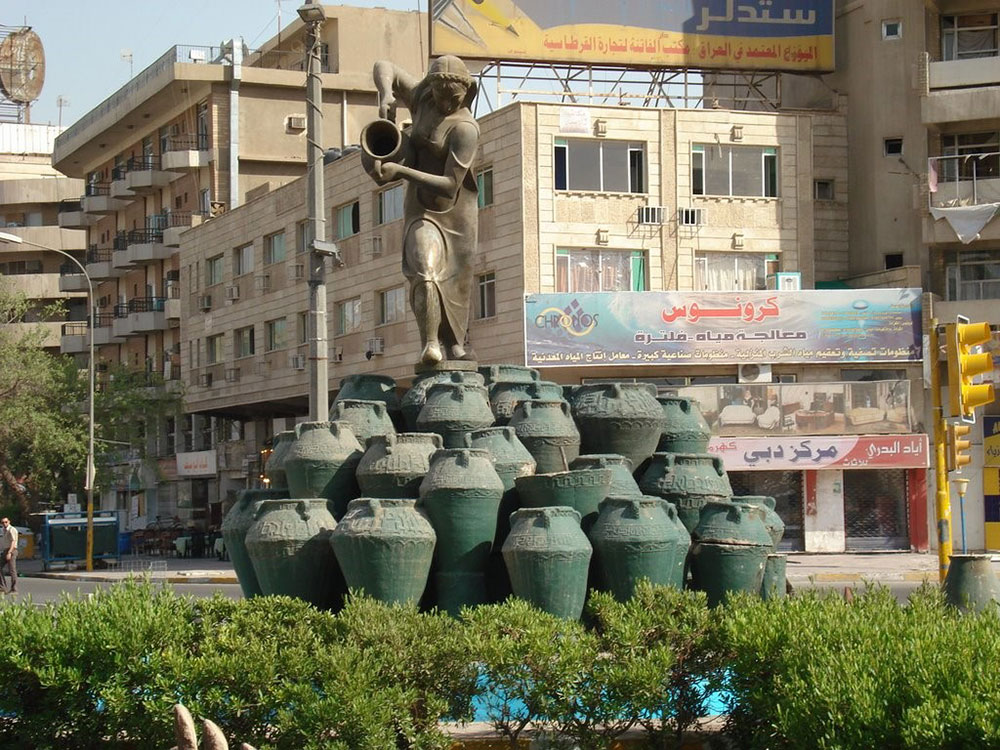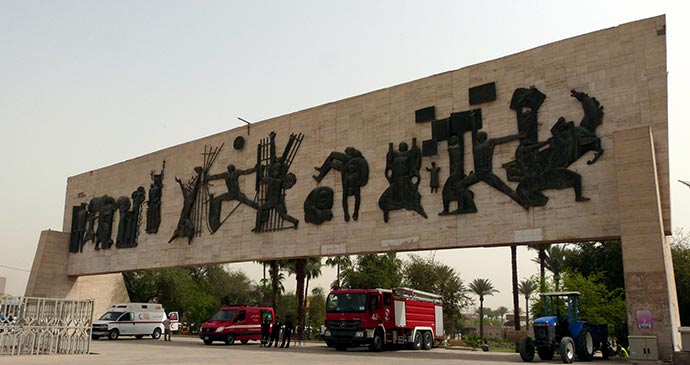Mohammad Ghani Hikmat (1929 – 2011) Posted by Fisal on Apr 21, 2016 in Arabic Language, Culture, Vocabulary
Ahlan أهــْــلاً, Arabic lovers! Yesterday, Google Middle East celebrated the 87th anniversary of Mohammad Ghani Hikmat مـحـمـد غـانـي حـكـمـت showing one of his famous monuments called “Saving the Iraqi Culture”. So, I thought it is a good chance to write a short biography about the man. Hikmat was one of the most important Iraqi sculptors نحاتين and artists in our modern time. Beside his artistic masterpieces, he played a very important role in restoring Iraqi statues and monuments in the aftermath of the 2003 invasion and fall of Saddam Hussein.

Google Doodle Saving the Iraqi Culture monument by Mohammad Ghani Hikmat
Early life and education
Hikmat was born in Baghdad on the 20th April, 1929. He studied sculpture under his teacher Jawad Saleim جواد سليم at the Fine Arts Institute and graduated in 1953. Then, he travelled to Rome where he got a sculpture diploma from the Academy of Fine Arts there in 1959. After that he went to Florence where he got a bronze casting certificate in 1961. He joined the Baghdad Group for Modern Art in 1953 and is considered one of the early founders of Al-Zawyiah الزاوية (Angle) Group in 1967. He played an effective role in the national and the international art galleries. He also had his own galleries in Rome, Beirut and Bagdad. In 1964, he got the “World Best Sculptor Prize” from the Gulbenkian Foundation مؤسسة كولبنكيان.
Artwork
Mohammad Ghani Hikmat designed a collection of statues and monuments in Baghdad that includes:
- Two Statues of Queen Scheherazade شهرزاد and King Shahryar شهريار
- The Kahrmanah Monument نُصُب كهرمانة in the middle of Baghdad
- Ali Baba and the Forty Thieves على بابا و الأربعين حرامى
- Ishtar Statue تمثال عشتار located at the Ishtar Sheraton Hotel of Baghdad
- Hammurabi حمورابي
- The Medicine City Mural جدارية مدينة الطب
- Statue of Al-Mutanabbi تمثال المتنبي; the famous Arab poet
- The Baghdad Memorial نُصُب الحرية in the Liberation Square in downtown Baghdad and which depicts the struggle of the Iraqi people from the time of the British occupation to the Kingdom time and then to the current republic. The monument was started and designed by Jawad Sleim and then completed by Mohammad Ghani Hikmat.
Hikmat’s artistic work extended outside of Iraq as he did sculpture work on one of the UNICEF اليونيسيف gates in Paris. In the 1980s, he did magnificent sculpture work on three wooden gates of the Tiesta De Libra Church in Rome and was the first Muslim sculptor to do such a thing. He also has artistic works in Oman and Bahrain.
Artistic Style
When a little child, Hikmat used to play with clay and mud making statues and shapes along the banks of the Tigris River. This may have influenced him. However, the great influence came from the Iraqi civilization as the land of the first writing system. In the introduction of his book, 1994, Hikmat introduced himself as this; “It is possible that I am another copy of the soul of a Sumerian or a Babylonian or an Assyrian or an Abbasid sculptor who loves his country.”
Hikmat had a strict work ethic that reflected his dedication to art making. To a far greater extent than most Iraqi artists, Hikmat was a public figure who completed work on a large scale for urban communities to appreciate. The tireless sculptor has been described by his friends and critics as vibrant and dynamic with unending energy and enthusiasm. He is seen as an icon of Iraqi modern art and an important advocate for its preservation.
To the sorrow of many, Mohammad Ghani Hikmat passed away September 12th, 2011 after suffering from kidney failure at the age of 82.
https://www.youtube.com/watch?v=Gx5_GEddX84
******
Check us back Soon!
Peace ســَــلام /Salam/

Build vocabulary, practice pronunciation, and more with Transparent Language Online. Available anytime, anywhere, on any device.
About the Author: Fisal
Well, I was born near the city of Rasheed or Rosetta, Egypt. Yes, the city where the Rosetta Stone was discovered. It is a small city on the north of Egypt where the Nile meets the Mediterranean. I am a Teacher of EFL.






